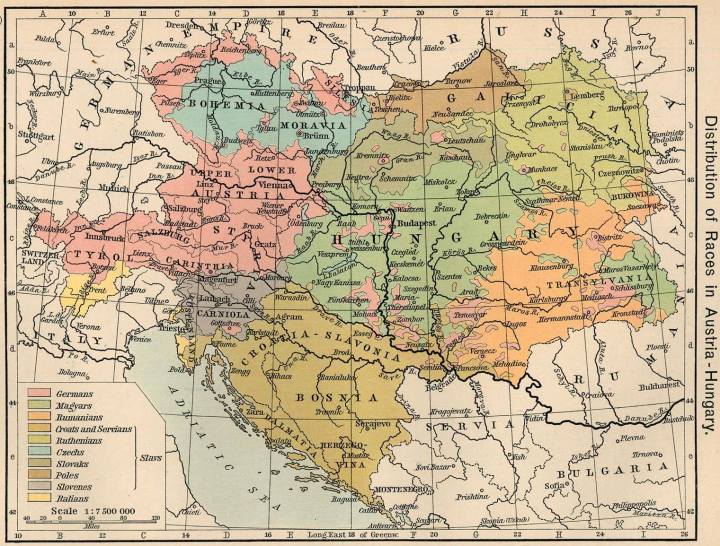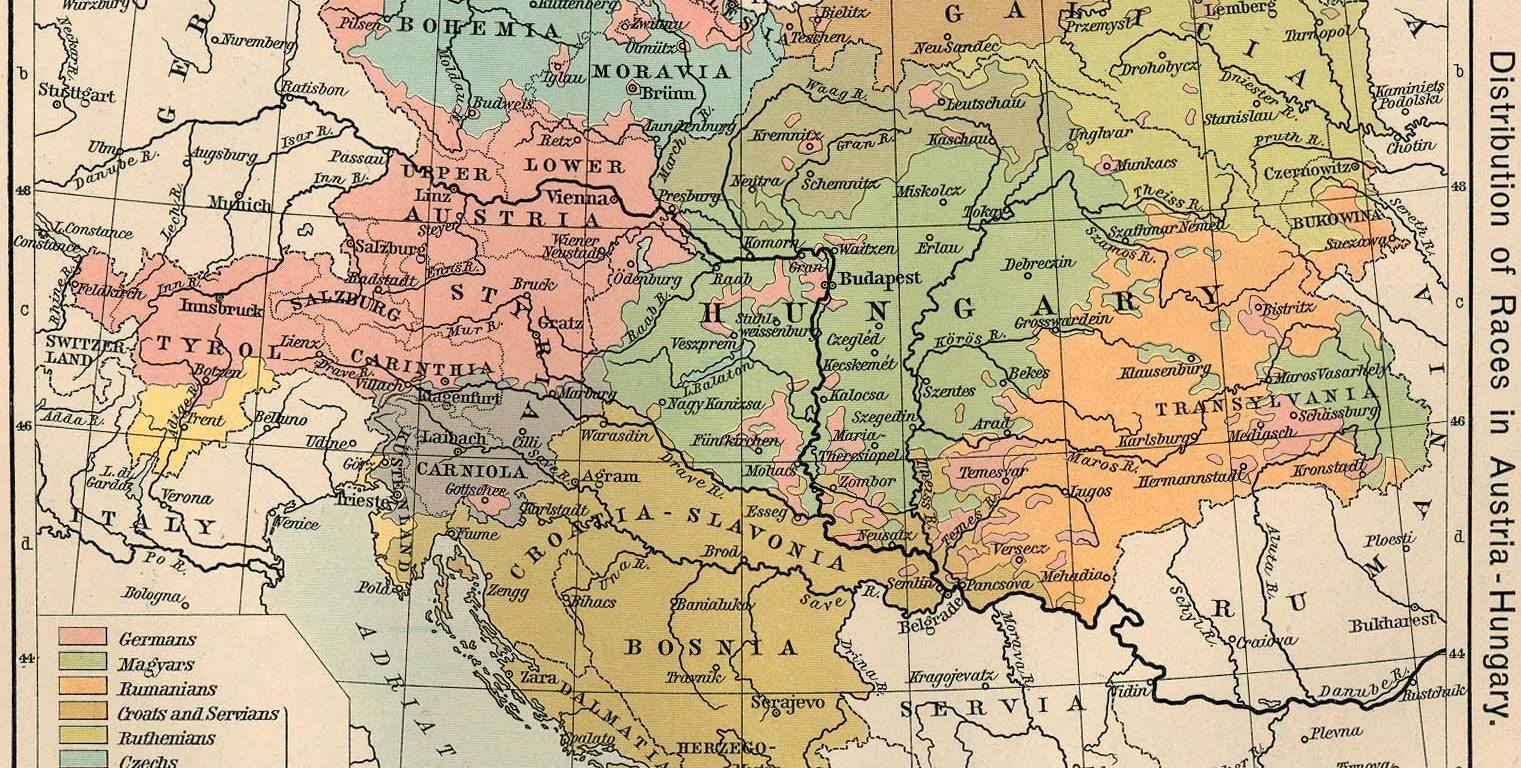
When the Dual Monarchy fell, few mourned. Across the Hapsburg lands separatists rejoiced as their dreams of independence were realised by the post-war treaties. Hopes for a new era of freedom and progress arose, as the new states of Czechoslovakia, Yugoslavia and Poland were created from the ashes of Austro-Hungarian Empire. These hopes were not to last. Two decades later, the Nazi jackboot stamped down on the nations of Central Europe. After 6 years of continuous warfare, their populations decimated by the combined evils of the depredations of the SS and conscription into Hitler’s ill-fated campaigns, these states enjoyed a brief respite. So brief, in fact, that it is hardly worth mentioning. By the late 1940s the Central European states found themselves under a new master, as the iron fist of the USSR clamped down on their autonomy. These nations would endure four decades of Soviet tyranny, before being liberated along with the rest of the Eastern Bloc in the late 80s and early 90s. The same cycle occurred- great hopes for a new epoch of peace and prosperity were born and then snuffed out. Economic ruin, the brutal ethnic conflicts within the former Yugoslavia, political corruption- the woes of Central Europe continued to multiply. Far from becoming the core of a newly revitalised, more liberal Europe free from the tyranny of ancient autocracies the new states became puppets of the 3rd Reich, then of Stalin, and then of nationalist fervour. When the century of conflict after the end of Hapsburg rule is taken into account, the days of the Austro-Hungarian Empire seem like a golden era of peace and stability.
It is undeniable that all constituent parts of the Empire were on the whole worse off after the fall of the Hapsburgs. At one end of the spectrum, take Bosnia-Hercegovina. From 1878, the province came under the rule of the Dual Monarchy, the Austro-Hungarians having captured the region from the Ottoman Empire. As a subject of the “Sick Man of Europe” Bosnia was a medieval backwater, undeveloped and lawless. The Hapsburgs turned that around. The Bosnian Commission built roads, railways, museums, theatres, cathedrals- with them the Hapsburg engineers brought infrastructural achievements and cultural advancement. The Bosnians were quickly incorporated into the Empire’s most prestigious organisation, the Imperial and Royal Army (k. (u). k) and by 1885 four Bosnian divisions were in active service- their fezzes delighted the crowds in Vienna. Each ethnic group- Croats, Serbs, and Bosniak Muslims, was represented by its own political party, and there was little repression.
And what happened after the Austro-Hungarians left? The region suffered along with the rest of Yugoslavia under Nazi dominion, with several concentration camps being built on Bosnian soil. Ethnic tensions flared- an estimated 30,000 Muslim civilians were massacred by the pan-Serbian Chetniks, and around 209,000 Serbs and Montenegrins died with them. From 1945, Yugoslavia was under the control of Marshall Tito, withering under decades of political oppression and then in the 1990s the Bosnian War broke out, which saw the first instance of genocide in Europe since World War 2 and in all lead to 101,000 deaths.
At the other end of the spectrum, take Hungary. From 1867 when the “Hungarian” part was added to the name of the Empire, Hungary had a privileged role within the Monarchy. It had its own military, its own parliament and prime minister, and its own king- who also happened to be the Austrian emperor. After the break-up of Austria-Hungary, the country came under the control of Miklós Horthy from 1920, a former admiral in the Austro-Hungarian navy. As Regent, essentially dictator, of Hungary, Horthy aligned with Hitler (though he was not himself a Nazi, rather a traditional conservative) from the 1930s, and thus his country suffered in the same way all Nazi-aligned states did. Although he was reluctant to participate in the Holocaust, out of the pre-war Jewish population of Hungary of 825,000 only 260,000 survived. This is in stark contrast to Emperor-King Franz-Josef’s view of his Jewish subjects- he is reported to have had an almost paternalistic view of the Jews in his Empire, having said in 1882 “I will tolerate no Jew-baiting in my empire.” Like Bosnia, after the war Hungary came under the control of the Communists- and even worse than Bosnia it came under the control of the Soviet Union. The Hungarian Revolution of 1956 was brutally put down by Soviet tanks, and the country would spend the most of the rest of the 20th Century under the thumb of various Soviet puppets. Unless one happens to be Fascist or Communist, one cannot claim that the constituent states of the Austro-Hungarian Empire were better off under those systems than under Franz-Josef’s liberal autocracy.
On a rather more abstract note, in terms of international standing the constituent parts of Austria-Hungary were better off then than even now. Austria-Hungary was one of the great powers, and was a key player on the continent for the entirety of its existence. Its institutions were respected world-wide, and the citizens of the Dual Monarchy enjoyed all the benefits off belonging to a major player. Rather than forming the basis of a new, enlightened Central Europe, having broken free from the shackles of an ancient autocracy, the new states after the fall of the Empire became part of the East, and even today are rather derisively considered part of “Eastern Europe” even though geographically they for the most part are not. Whilst hardly “third world” the states that cover the former Hapsburg lands, with the exception of Austria are not exactly “first world”- they are at best emerging economies. No one thinks of Croatia, or Bosnia-Hercegovina as world powers- most probably haven’t even heard of them. Though not the most important factor, it is an excellent indicator of just what Central Europe lost when the Hapsburg Empire fell.
The Hapsburg lands today are split between 14 different countries- Austria, Bosnia and Herzegovina, Croatia, the Czech Republic, Hungary, Italy, Montenegro, Poland, Romania, Serbia, Slovakia, Slovenia, Ukraine and bizarrely the People’s Republic of China. It was an Empire that spanned vast cultural divides, and demanded of its subjects only that they be loyal to the Emperor. In return, it offered religious and political freedoms, economic prosperity, equality, benevolent governance and security. Though not wholly appreciated while their institution existed, once the Hapsburgs were gone the benefits they gave their subjects would be sorely missed. On both the practical and more abstract, prestige based level Central Europe was better off 100 years ago than it is today. The Great War brought to an end the last bastion of the Hapsburg Monarchy, a dynasty that had ruled Austria since 1276, and with this fall any hope of long-lasting peace and co-operation in that area of Europe was shattered. It took a monumental effort on behalf of the Hapsburgs to keep their Empire together given the culture and linguistic differences (recruitment posters in WW1 were written in 15 different languages) and once they were gone, there was no hope of maintaining the fragile concord in the region, as proved by the decades of conflict that followed World War 1.

